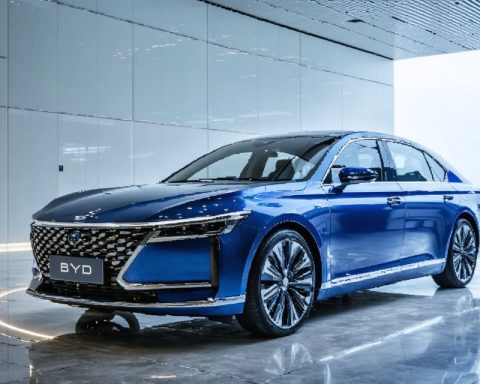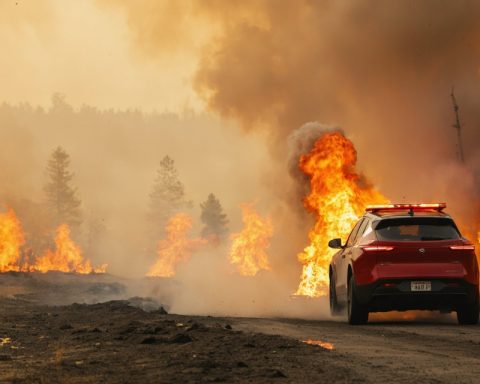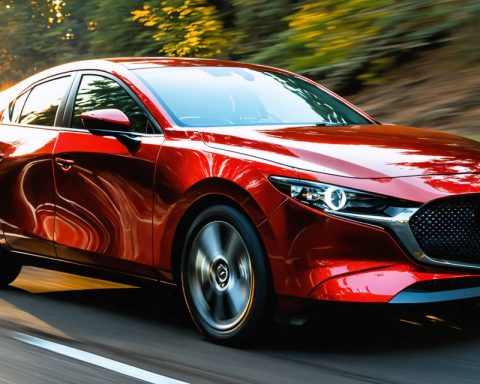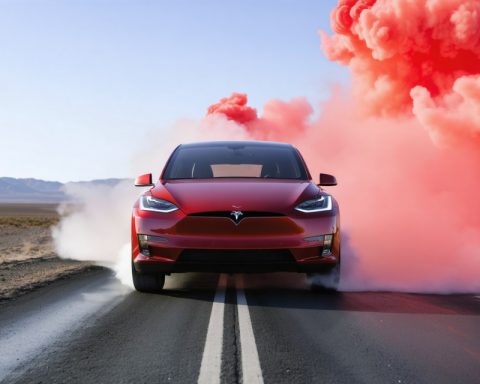- Navarre High’s Shock and Awe Electrathon Team prepares innovative electric cars for the annual race at Five Flags Speedway, driven by ambition and creativity.
- Unlike traditional motorsport, Electrathon racing prioritizes endurance; the car completing the most laps within a set period wins.
- Guided by mentor James Fox, students explore automotive engineering, blending classroom knowledge with real-world applications.
- Team members like Sophia Stahura and Hunter Englert demonstrate dedication, envisioning futures in professional racing and applying skills to construct competitive vehicles.
- The experience fosters confidence, industry connections, and community support, with sponsors like Santa Rosa County Sheriff’s Office investing in the team’s innovation.
- The race emphasizes that success is powered by dreams, teamwork, and perseverance, with potential future interstate competitions expanding opportunities.
A congregation of ambition and creativity hums through the hallways of Navarre High as students at the heart of the Shock and Awe Electrathon Team prepare to chase the checkered flag at the annual race at Five Flags Speedway. These budding engineers, navigators of the future, refine their custom-built electric cars with precision and grit, fueled by a desire to transform laps into legacies. Last year’s race saw them clinch an impressive second and third place in their inaugural outing, narrowly missing the top spot by a single lap due to an untimely flat tire. This year, they return with renewed determination and three handcrafted electric marvels ready to hit the track.
Unlike traditional motorsport, Electrathon success hinges on endurance rather than sheer speed. The rules are simple: the car completing the most laps within a set timeframe emerges victorious. In this arena, students from Florida, Alabama, Georgia, Louisiana, and Texas harness physics and teamwork rather than horsepower. The road to race day is paved with late nights and trial errors as students challenge themselves to build faster, more reliable vehicles. It’s more than just a competition; it’s a proving ground where young minds engineer solutions, balance chemicals, and finesse mechanics.
Guided by their passionate mentor, James Fox, they delve into all aspects of automotive engineering—from welding and electronic circuitry to tire symmetry and weight balancing. Fox sees the race as a stage where his students’ dedication and skills shine. This endeavor strengthens their resolve, as many, like junior Sophia Stahura, envision thriving in the broader world of professional racing. Inspired by time spent in her family’s automotive shop, Sophia aspires to become a racing engineer, channeling her energies into endurance racing circuits.
Hunter Englert, another key member, proudly readies his creation for the race—a lithe lithium-battery-powered car lovingly assembled over two months. His eyes sparkle with the thrill of innovation as he gears up to take his masterpiece onto the track, embodying the team’s ethos of learning through doing. His journey, much like that of his teammates, blurs the line between classroom lessons and real-world applications, offering a robust platform to troubleshoot and innovate.
While the exhilarating finish line looms closer, the rewards for these young engineers extend beyond it. The confidence gained, connections built, and lessons learned prepare them for future challenges. Sponsors like the Santa Rosa County Sheriff’s Office and Whataburger see the potential in these students, investing in a new generation of thinkers and creators. This spirit of communal support fuels ambitions beyond the Speedway—as Canadian and Texas teams bring fierce competition to Florida, new opportunities for interstate races beckon.
For the Shock and Awe team, the race is a thrilling dash towards triumph and a testament to unyielding passion. In the hustle and bustle of preparations, they discover that the road to greatness is less about speed and more about the drive powered by dreams and tenacity.
Revving Up for Success: How Navarre High’s Electrathon Team Drives Innovation and Learning
Unleashing the Power of Youth: Electrathon Racing Explained
Electrathon racing, a dynamic and educational motorsport, emphasizes endurance, engineering, and teamwork rather than just raw speed. Unlike traditional car races, the winner is determined by who can cover the most laps within a set timeframe. This approach demands a careful balance between energy management and technical skill, offering students an invaluable hands-on learning experience.
How-To Build a Competitive Electrathon Vehicle
1. Design and Planning:
– Start with drafting a blueprint focusing on aerodynamics to reduce drag.
– Prioritize weight distribution to ensure stability and efficiency.
2. Material Selection:
– Use lightweight materials such as aluminum or carbon fiber for the chassis.
– Opt for high-efficiency lithium batteries to power the vehicle.
3. Assembly and Testing:
– Assemble with precision, paying close attention to welding and circuitry.
– Conduct rigorous testing to fine-tune the relationship between power and endurance.
4. Strategy Development:
– Craft a race strategy considering varying track conditions and competitor tactics.
– Train drivers in energy management to maximize lap counts without over-depleting battery power.
Real-World Use Cases and Industry Trends in Electrathon
Beyond high school competitions, the skills and technologies developed in Electrathon races have broader applications in electric vehicle design and sustainable engineering practices. The transition towards green energy in the automotive industry mirrors the objectives of Electrathon initiatives—developing efficient, eco-friendly vehicles.
The Future of Electrathon: Predictions and Industry Trends
The electrification of transportation continues to drive interest in Electrathon competitions. As communities and governments push for sustainable initiatives, programs like these are likely to gain more support and visibility. Future trends might include:
– Expanded Competitions: Increasing participation may lead to larger-scale competitions and incorporating more advanced technologies, such as regenerative braking or solar power.
– Collaboration Opportunities: Partnerships with tech companies and universities could introduce students to cutting-edge innovations, further bridging the gap between education and industry.
The Pros and Cons of Electrathon Participation
Pros:
– Skill Development: Offers hands-on experience in engineering, project management, and teamwork.
– Career Opportunities: Provides networking avenues with sponsors and alumni working in the automotive and engineering sectors.
– Sustainability Focus: Reinforces environmental awareness and practices among participants.
Cons:
– Resource Intensive: Requires significant time, financial, and material investment.
– Competitive Pressure: The competitive nature might be overwhelming for some students.
Conclusion: Quick Tips for Aspiring Electrathon Racers
– Focus on Fundamentals: Master basic engineering concepts before tackling advanced designs.
– Seek Mentorship: Engage with teachers and industry professionals who can provide guidance and resources.
– Continuous Learning: After each race, analyze performance to identify areas for improvement.
For those interested in exploring more about educational motorsport initiatives and the role they play in developing future engineers, check out FIRST Robotics for a compelling entry point into engineering competitions.
Engage With the Electrathon Community
By becoming part of this movement, students not only enhance their educational journeys but also contribute to the broader push for innovation and sustainability in today’s world. Let passion guide you through every lap, and let learning fuel your drive.













